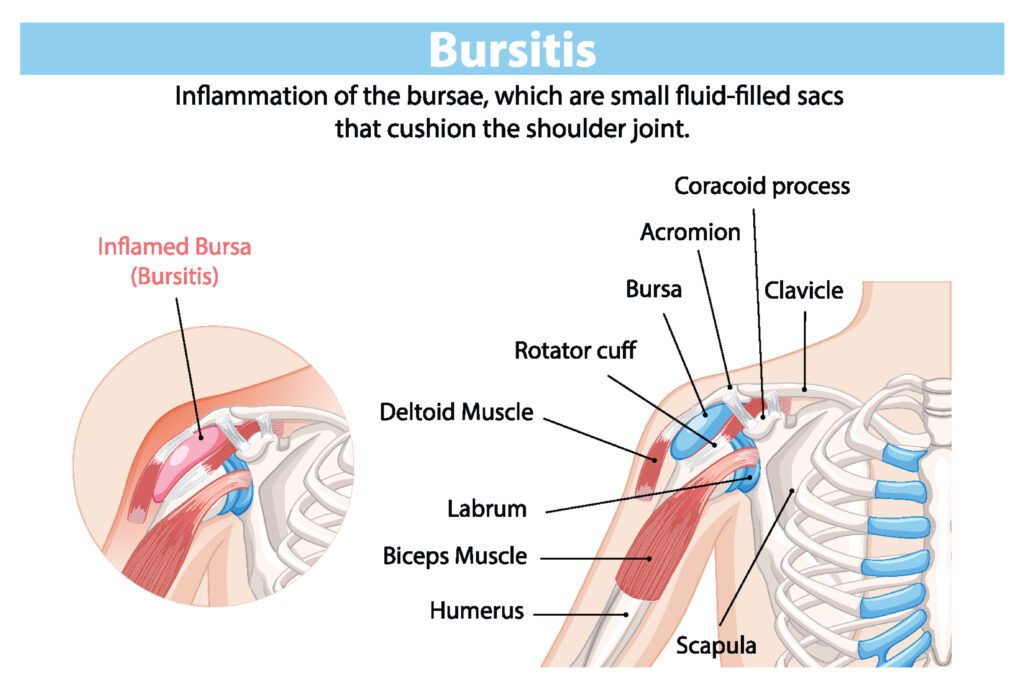What is it?
Subacromial bursitis is inflammation of the subacromial bursa, a fluid-filled sac located between a part of the shoulder blade (called the acromion) and the rotator cuff tendons.

Who is at risk?
- People with repetitive overhead arm use
- Athletes, particularly in sports that require repetitive overhead arm use or throwing
- People with poor posture at the desk
- Adults over 40 years old
- People with pre-existing shoulder conditions or history of shoulder injuries
What are some common symptoms?
- Shoulder pain, especially when lifting the arm overhead
- Tenderness or swelling on the outside of the shoulder
- Limited range of motion
- Pain that worsens at night or when lying on the affected side
Causes?
Common causes include:
- Repetitive overhead activity (e.g., painting, swimming, lifting)
- Shoulder trauma or injury
- Poor posture
- Rotator cuff injuries
- Arthritis or calcium deposits
- Infections (rare)
How is it diagnosed?
- Medical history and physical examination
- Imaging: Ultrasound, MRI, or X-ray (to rule out other conditions)
Do I need surgery?
In most cases, subacromial bursitis does not require surgery. Surgical management can be helpful in some cases where conservative treatment has been exhausted, however it is often not recommended as a first-line approach to treatment.
How long will recovery take?
With conservative treatment, most people improve within a few weeks to a few months. Chronic or severe cases may take longer.

What does treatment look like?
- Rest and activity modification
- Ice therapy
- Nonsteroidal anti-inflammatory drugs (NSAIDs)
- Physical therapy
- Corticosteroid injections
- In rare cases: surgery (e.g., bursectomy or decompression)
How can I prevent this?
- Avoid repetitive overhead activities
- Use proper technique when lifting or exercising
- Strengthen rotator cuff and shoulder muscles
- Improve posture
- Take breaks during repetitive tasks